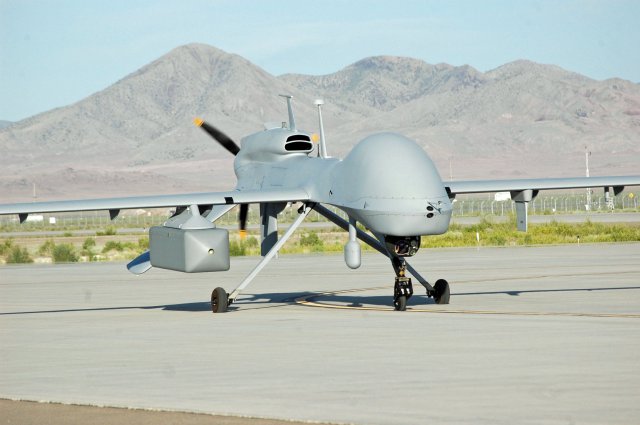 The US Army’s ever-growing use of unmanned aerial systems has gotten to the point where two of the most commonly used UAS are getting their own airport.
The US Army’s ever-growing use of unmanned aerial systems has gotten to the point where two of the most commonly used UAS are getting their own airport.
The service’s Corps of Engineers at Fort Worth, Texas, has awarded a $33 million contract to SGS to build a 150-acre unmanned aircraft launch and recovery complex at Fort Bliss, New Mexico for Gray Eagle and Shadow UAS.
The complex will include a 50,000-square-foot unmanned aircraft maintenance hangar and more than a mile of runways, aprons, and taxiways, according to an announcement from the company. The runways will include a 5,000-foot runway for the Gray Eagle and a 1,000-foot runway for the smaller Shadow. In addition to maintenance shops, administrative space and storage space in the hangar, the facilities also will have a 5-ton bridge crane, oil/water separator, aircraft container and forklift storage, taxiway, access apron, oil and hazardous waste storage buildings, vehicle storage facilities, organizational vehicle parking, and overhead protection/canopy.
The airport will be fenced and secured, and the Army said all operations will take place in restricted airspace.
The Army’s 25-year roadmap for unmanned systems, released in 2010, calls for integrating UAS across the full spectrum of military operations. Fort Bliss, which hosts the 1st Armored Division and accommodates a variety of ground vehicles, along with Apache and Black Hawk helicopters, will now be adding the Gray Eagle and Shadow.
The Gray Eagle, the Army’s largest UAS, is a long-range, medium altitude system used for intelligence, surveillance and reconnaissance, attack, air support, IED detection and destruction, and as a communications hub. Measuring 29 feet long, with a wingspan of just over 56 feet, It can operate for 36 hours at altitudes up to 25,000 feet, with an operating range of 200 nautical miles.
The catapult-launched Shadow is used for ISR, targeting and assessment. It’s just over 11 feet in length, with a wingspan of 14 feet, can fly for up to six hours at altitudes of up to 15,000 feet, giving it a range of 59 nautical miles, and lands by catching an arresting wire attached to disk brake drums.
Photo: Gray Eagle
Source: Defense Systems
